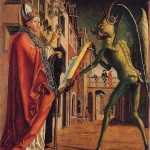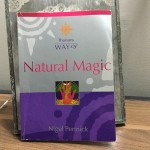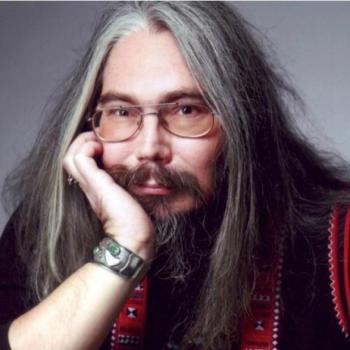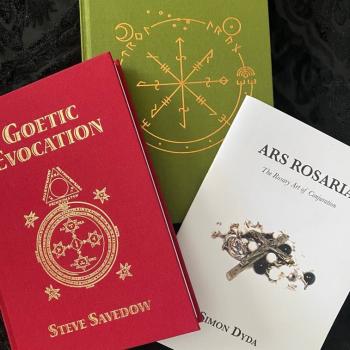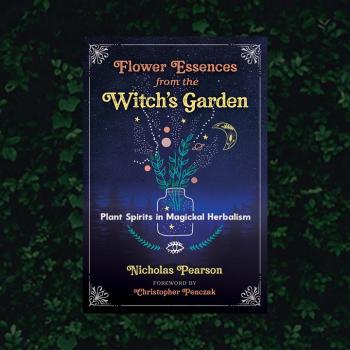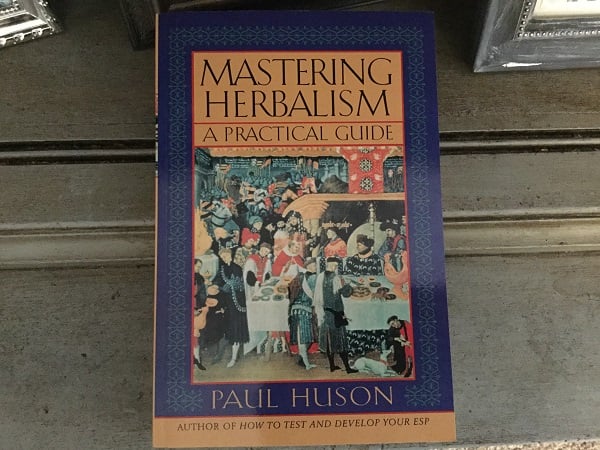
A Complete Guide of Historical Plant-Based Practices-Science, Medicine and the Occult
Paul Huson, British-born author and artist residing in the U.S. Huson has also worked extensively in the television and film making industry. Born in 1942, Huson entered the Slade School of Fine Art at the University of London, until 1963. While attending Slade, Huson studied Qabalah and the Western Esoteric tradition with Dion Fortune’s Society of Inner Light. His influential work Mastering Witchcraft was published in 1970. Mastering Herbalism begins with a brief history of herbal practice; describing the details of botanical knowledge beginning with antiquity up to present day. The knowledge and use of botanical medicines has been widespread throughout human history continuing to be a detailed science, taking years of study to master.
The three-hundred page book is organized in categories based on practical use; health, cooking, perfumes, and incense, cultivation and witchcraft to name a few. The corresponding plants are listed within each category. Unlike many of the countless other herbals out there, Mastering Herbalism, goes into detail that few others do. This book is very well researched. Huson shares traditional herbal lore, collecting information from numerous primary sources and also obscure concepts found in other herbals. He provides recipes from the Middle Ages and local cures from the 18th and 19th century describing their medicinal properties and offering various formulas for simples, infusions, and basic medical preparations.
The section on cooking has some great wholesome recipes, and also instructions on wine and beer making. It is just as in depth as the previous chapter on medicines, and would be a fruitful resource for kitchen witches. Huson does not waste any ink by re-explaining common knowledge, going right into the details. Each page is packed with original information. The book continues on in this manner, beginning the next section on herbal perfumes and incense. This chapter gives directions for making herbal sachets and potpourris, using techniques of old-fashioned perfumery. There is also information on making perfumes and other liquid aromatics using traditional recipes, and a most detailed guide to preparing incense. It includes which resins and gums to use, and a multitude of ways incense can be burned. Huson also lists traditional incense recipes given y Culpepper for astrological and planetary fumigations.
A lovely chapter on herbal beauty secrets and aphrodisiacs leads the book into a more esoteric direction. There are many useful organic beauty preparations for skin and hair. Pomanders, wet potpourri, and aromatic vinegars are a few of the time tested methods included here.
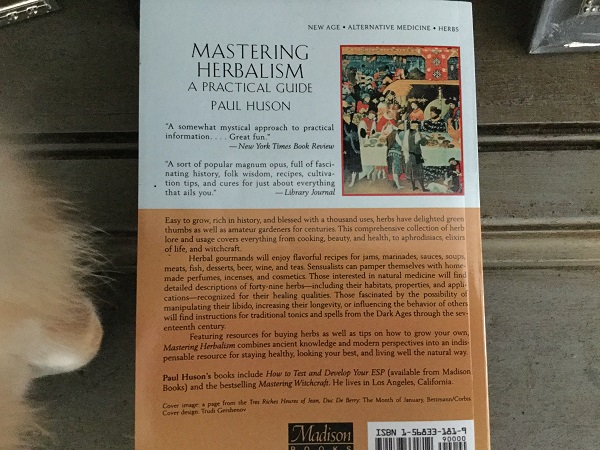
Witchcraft and Wortcunning
Although the first half of the book is dedicated to medical and mundane herbalism, it is still a valuable resource for the practitioner of herbal magic. The chapter on Witchcraft and Wortcunning makes up a small portion of this large guidebook, but is one of the most important chapters. The information contained therein provides more detail on traditional herbal practices than many other entire books devoted to the topic. Herb gathering and the Nine Herb Charm of Saxon Wortcunning begins the chapter which continues with section on Herb magic divided by time period, starting with the Middle Ages and the 17th century. The majority of herbal lore comes from the early modern period instead of modern sources.
In the section on Witchcraft, Huson describes which plants were traditionally used for what purpose, and gives examples of how people have used them. Discussing herbs for exorcism, love and divination and other magical pursuits such as scrying. The culmination of the chapter, and book, in my opinion, is the section on witches’ ointments. Huson doesn’t hesitate to discuss the m in detail, analyzing some old recipes, and the solanaceous plants of the witch’s garden.
The book also serves as a resource for further study. The tables of weights and measures and glossary will continue to be useful. The bibliography is most considerate. Also divided by category, Huson lists numerous resources for continued studies. Categories like the Old Herbalists, Medicine and Formulas, and Witchcraft and Wortcunning are topics of interest for anyone looking to continue studying traditional herbal practices.

